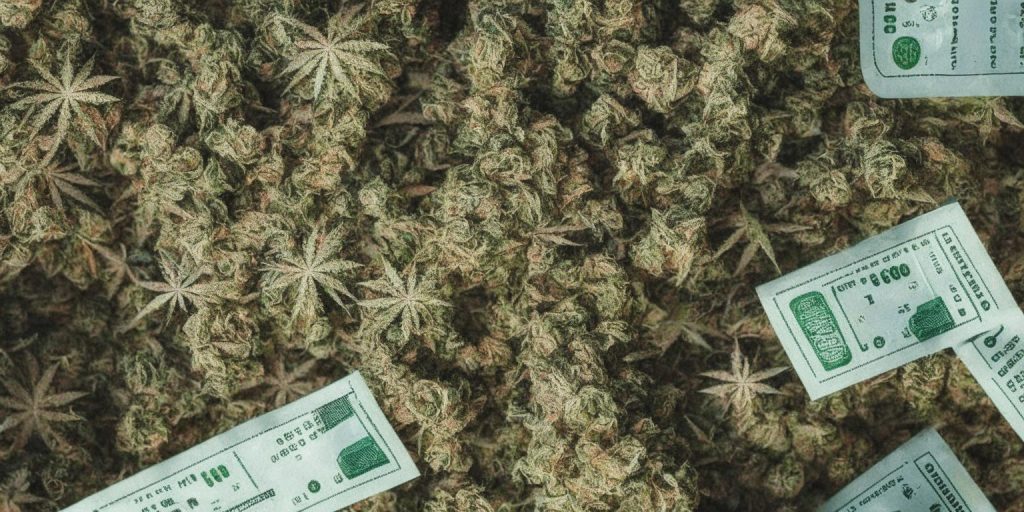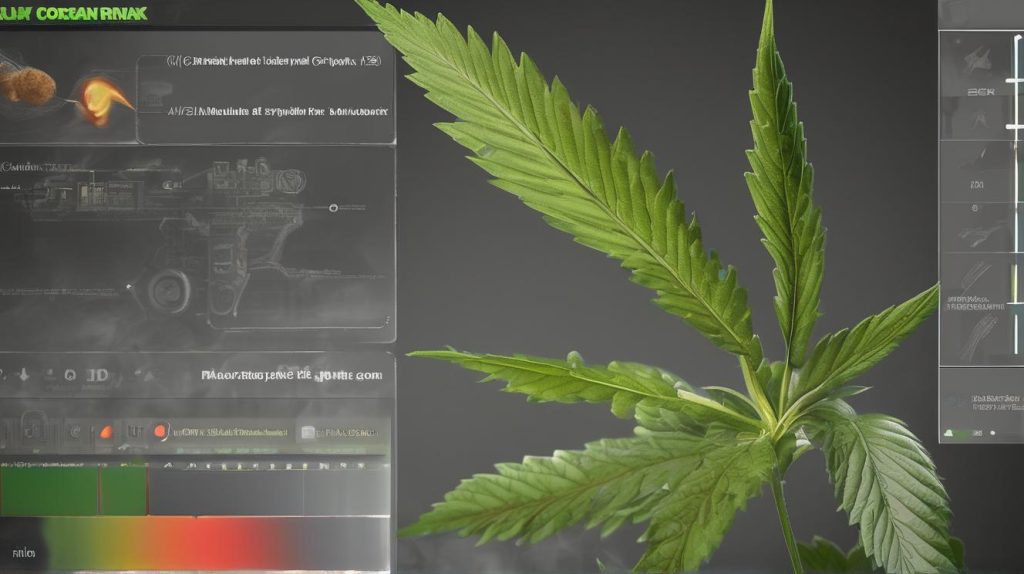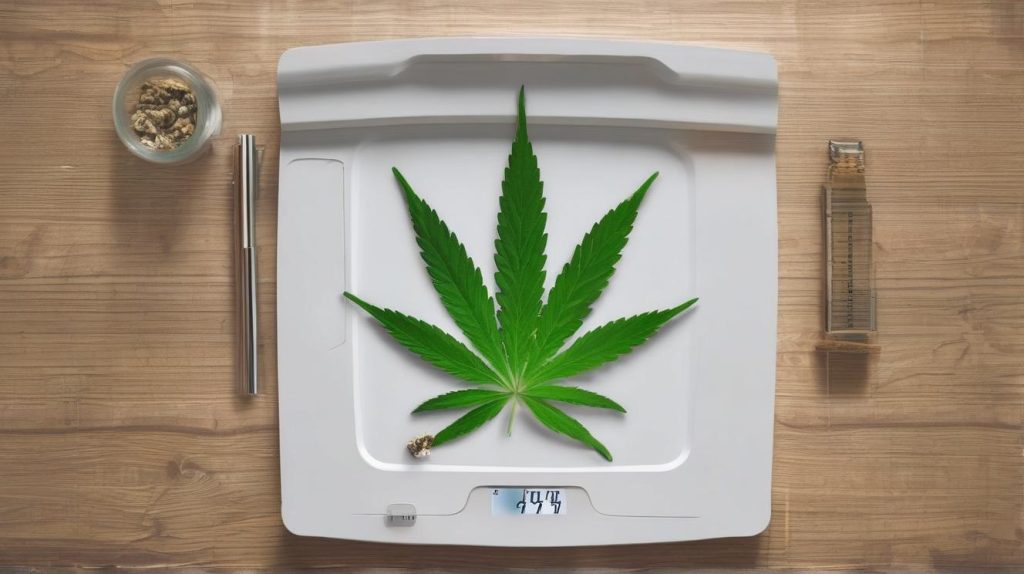
This article is part mystery, part educational guide, weaving together the threads of economics and the ever-evolving landscape of cannabis packaging. It’s a journey into the heart of understanding weed price, a topic as varied and complex as the plant itself. So, dear reader, join me as we unravel this enigma, embarking on a voyage of discovery where every leaf turned unveils a new layer of understanding.
Marijuana’s cost on the street isn’t fixed; it fluctuates based on various factors. Understanding these price variations and the different quantities sold is crucial for consumers and curious individuals.
Breaking Down Marijuana Pricing: Gram to Ounce
What Does a Gram Cost?
A gram, roughly the size of a grape, is a standard purchase unit. It costs between $10 to $15 and is the foundation for many transactions.
Insights into an Eighth Ounce
Moving beyond grams, an eighth ounce, constituting 3.5 grams, offers a better bulk deal. Priced between $35 to $60, it’s favored by regular users.
Unpacking a Quarter Ounce
Seven grams, termed a “quad” by users, provides an economical option, yielding 12 to 14 joints. Market prices average around $68, sometimes hitting $100.
Delving into a Half Ounce
Known as a “half-o” among users, this quantity, containing 14 grams, is favored by moderate consumers. Prices range from $80 to $250, depending on quality.
Understanding an Ounce
A more significant purchase, an ounce comprising just over 28 grams, caters to frequent users or small groups. Prices span from $284 to $590 across the US.
Magnitude of a Kilogram
For dealers, a kilogram, holding 1,000 grams, is a bulk purchase. Costs vary drastically, from $1,000 to $7,000, primarily influenced by quality and location.
Factors Affecting Marijuana Prices
The pricing is influenced by several factors, including the strain’s quality, the legal status of marijuana, the dynamics between buyers and sellers, and the fundamental principles of supply and demand.
Regional Price Disparities
The cost of marijuana isn’t uniform across states. It ranges widely due to differing regulations and market demands, from $318 on average in the US to specific prices in various forms.
Impact of Legalization on Pricing
States with legalized marijuana often experience reduced prices due to increased supply and competition among sellers, contrasting sharply with states where it remains illegal.
Social and Economic Implications
Marijuana pricing can intertwine with socioeconomic aspects, affecting accessibility and usage patterns and leading to broader social implications.
Public Health Considerations
Price fluctuations also have ramifications for public health, potentially influencing usage trends and addiction rates.
State Laws
State laws play a pivotal role in shaping the weed price landscape. Each state has its unique set of rules, adding to the complexity and intrigue of the cannabis world. Understanding these laws is an essential part of navigating your journey with cannabis.
Conclusion
The pricing of marijuana exhibits substantial variability influenced by quality, quantity, legality, and location. Understanding these nuances aids consumers in making informed choices.
FAQ
Consistency Throughout the Year: Understanding the Dynamics of Cannabis Pricing
The price of cannabis is a fluctuating variable, influenced by an interplay of multiple factors that shape its cost throughout the year.
Understanding Seasonal Variations
Seasonal changes significantly affect cannabis pricing. Variables such as supply, demand, and the time of year are pivotal in determining market prices.
Impact of Outdoor and Indoor Cultivation
The type of cultivation—outdoor or indoor—also substantially impacts pricing dynamics. Outdoor cultivation during harvest seasons may increase supply, potentially lowering prices. Conversely, indoor cultivation stabilizes supply but might be influenced by energy costs, thus impacting pricing.
Demand’s Influence on Cannabis Prices
Special events or holidays often trigger fluctuations in cannabis prices due to heightened demand. Notably, 4/20, celebrated on April 20th, witnesses temporary price hikes due to increased demand.
Quality’s Role in Determining Price
Quality Indicators and Their Significance
The quality of cannabis, determined by factors like potency, aroma, and overall appearance, plays a pivotal role in price determination. Higher-quality cannabis often commands premium prices due to increased consumer demand.
Legalization’s Influence on Pricing
Initial Effects of Legalization
In states where cannabis is legalized, prices can be influenced by regulation, taxation, and market competition. Initially, prices might surge due to limited supply or high taxes.
Long-Term Price Changes in Legalized States
However, as the market stabilizes and supply normalizes, prices tend to normalize or decrease over time, aligning with market dynamics and competition.
Taxation in Legalized States
Understanding Taxes in Cannabis Sales
Prices in legalized states typically exclude taxes from their quoted rates. Various taxes like sales tax, excise tax, and local cannabis-specific taxes contribute significantly to the final cost experienced by consumers.
Predicting Future Price Shifts
Analyzing Market Trends for Projections
Forecasting future cannabis prices involves:
Examining historical trends and current market conditions.
Considering evolving regulations.
Technological advancements in cultivation.
Changing consumer preferences.
Anticipating Future Trends
Supply-Demand Dynamics and Price Expectations
The dynamic nature of the cannabis market makes predicting future prices complex. Supply increases due to expanded legalization or advancements in cultivation might lead to price decreases. Conversely, increased demand or evolving consumer preferences could drive prices upwards.
The cannabis market remains dynamic and subject to multiple influencing factors, making future pricing uncertain and dependent on the interplay of supply, demand, regulations, and market forces.
The dynamic nature of the cannabis market makes predicting future prices complex. Supply increases due to expanded legalization or advancements in cultivation might lead to price decreases. Conversely, increased demand or evolving consumer preferences could drive prices upwards.
The cannabis market remains dynamic and subject to multiple influencing factors, making future pricing uncertain and dependent on the interplay of supply, demand, regulations, and market forces.



